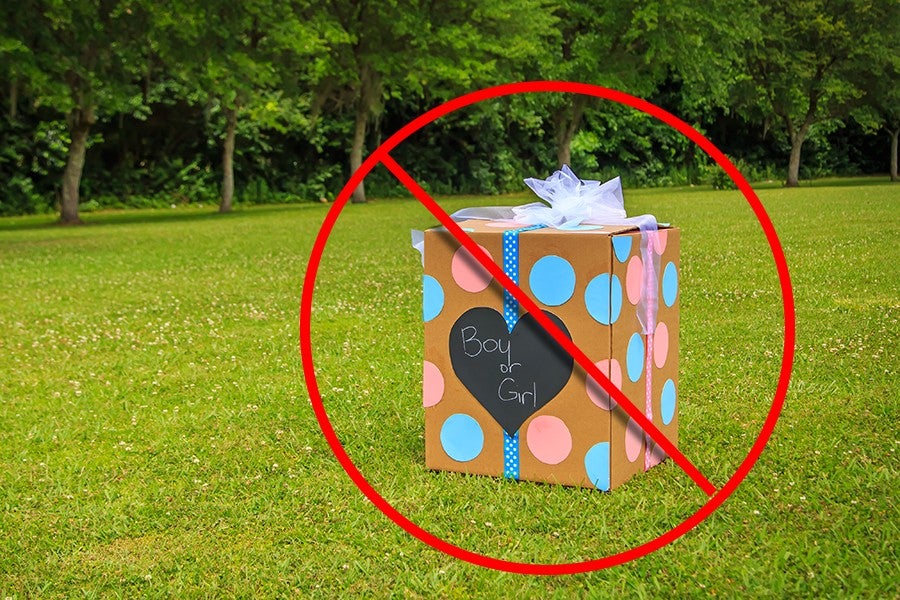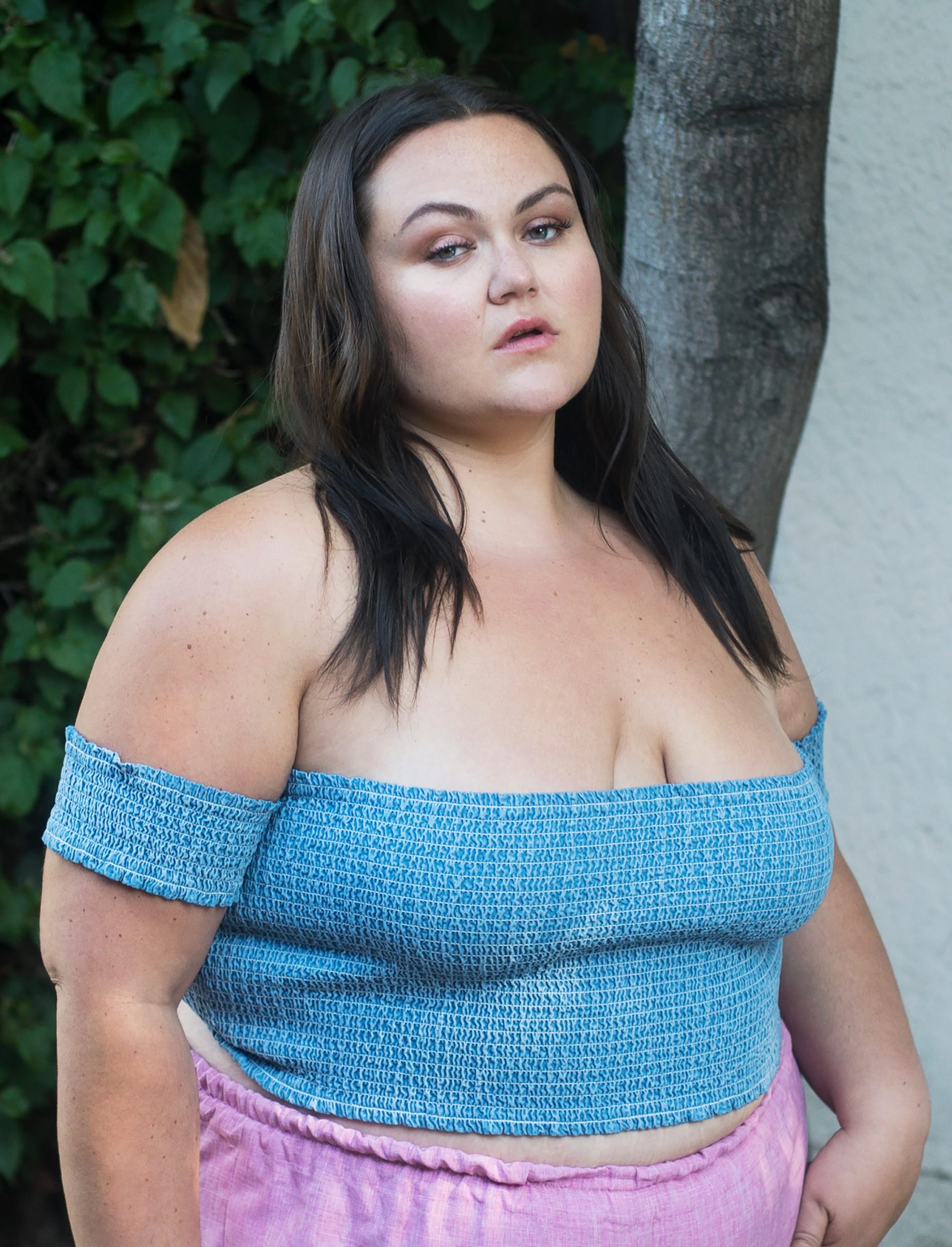Earlier this fall, I attended a gender-reveal party for the first time. My cousin and his wife hosted it in their classically SoCal backyard, where a full pig was roasting in the smoker. The party was Dia de los Muertos–themed and the expectant mother looked regal in shades of purple and an ornate flower crown. During the appetizer course, my mom poured salsa all over the pizza-roll-style appetizers because she thought it was marinara, and many of us took turns roasting her. We wagered on the baby’s birth sex via a game of bingo and cheered when their nearly 10-year-old son saw the piñata burst with blue confetti and exclaimed that he was having a brother.
“Sure,” I whispered to my mom, “this is the baby’s gender for now.”
But I was a loving guest, not a queer parenting consultant for hire, so I took my shot of tequila while shooting video of the whole thing for the mom-to-be to post on Instagram later.
Yet by being there, I somehow felt like I had joined a debate about the state of modern parenting. Or, at the very least, I was witnessing an interesting dichotomy. Which is essentially that in an age where the myth of binary genders is being publicly deconstructed more than ever, we seem to have reached peak gender-reveal party—that peculiar occasion for expectant parents to gather their friends and family and announce the gender of their unborn child.
A quick Google search for “gender reveal ideas” will reveal a million themes and approaches parents have already experimented with. One awful theme is “Lashes or Staches,” in which “lashes” embody the fluttering eyelashes of one’s already flirty baby girl and “staches” represent an unborn baby boy’s manly scruff. The methods for actually “revealing” the “gender” are even funnier. Some people host their events on baseball diamonds, and the mom-to-be pitches a special ball filled with either pink or blue slime to the dad-to-be.
I believe Yasiel Puig just did a baby gender reveal at home plate. It's a boy. Guessing he'll post something on Instagram or Twitter pic.twitter.com/3tHLDEUVqx
— Eric Stephen (@ericstephen) August 25, 2017
The superficial takedown of these parties is that they are the exclusive purview of the thirsty. But the larger, more complex debate is around the whole notion of gender in the first place. As understood by experts, gender is a multidimensional spectrum with a multitude of unique expressions, none of which are decided by one’s birth “sex,” or genitalia alone. Some of us are cisgender or transgender; others are intersex or identify as genderqueer, genderfluid or gender-creative, terms that represent genders that don’t adhere to the sort of boy-or-girl, pink-or-blue framework that gender-reveal parties enforce. And regardless of what a child’s gender expression is, research shows they’re not going to express it until about 4 years old, meaning from one perspective, older toddlers would be better suited for such occasions than infants still in utero.
So while the conversation used to be about whether or not parents should find out their baby’s gender before the birth, the hot topic today is whether or not the child should be told what their gender is. More and more parents are choosing to raise their children genderless, using neutral pronouns and colors and allowing the child’s tastes and preferences to be shaped by their own free will instead of any ideas about what “boys” or “girls” should be like. Lori, from Raising My Rainbow, became awakened to a lot of these issues while raising her gender-creative son CJ.
“Parents-to-be can’t reveal their unborn baby’s gender,” she says. “In general, gender is what’s in a person’s head that tells them that they’re male or female, or both, or neither, or some unique combination. So in that way, parents-to-be can only reveal their unborn baby’s sex. And in general, sex is what’s between a person’s legs: their penis or vagina.”
The Gender Free I.D. Coalition is a unified force against legally naming a child’s gender at birth, and lists its vision as “to remove all gender/sex designations from identity documents.” Its idea boils down to the idea that there is no point in “certifying” a child’s gender years before that gender has had a chance to be expressed. Basically, activists see checking off a gender box at birth as placing a child in that box without their consent, constraining their freedom of expression and thwarting their opportunity to become whoever they are.
Writer, scholar and parent Jane Ward writes extensively about being present with whoever your child is, without declaring their future as predestined through any gender assignment, as a key facet of queer parenting:
“Before our child was born, my partner and I agreed not to impose the gender binary on the new person we would soon be living alongside. We do not use the words ‘boy’ and ‘girl’ to refer to our child, or to anyone else’s children (unless they have shared their gender identification with us already). We provide our child with clothing and toys marketed to both girls and boys. As we read books to our child, we change many words and sentences in order to imagine their characters and plot narratives in more feminist, queer and genderqueer ways. We frequently change ‘he’ to ‘she,’ as the former is terribly overused in kids’ books as a universal pronoun to describe all animals and most people. We change man/woman and boy/girl to ‘person,’ ‘friend,’ ‘kid,’ ‘the narrator,’ ‘the soccer player,’ and so on (e.g., we have a book that we call Frosty the Snow Friend).
“When strangers ask us the gender of our child, we typically answer with, ‘That’s Yarrow’ (our child’s name). Yarrow is perceived by strangers as both a girl and a boy, each with nearly equal frequency. We wait to see which pronouns others will choose to describe our child, and we roll with it. Three times I personally have buckled under the pressure to answer the question ‘boy or girl?,’ but I suspect that my answer was relatively insignificant to Yarrow.
“To our minds, our practices flow logically from the fact that my partner and I don’t know anything about our child’s gender or sexual subjectivity. Our child has not articulated a gender identity to us. To do anything else would be to guess about our child’s future identifications based on anatomy and the weight of heteronormativity, so instead we stay present with what we know.
“As for us, we follow our own gender preferences. We call one of us ‘mom’ and the other ‘dad,’ even as we both have vaginas. What effect will parenting in this way have on our child? What liberation or damage may result? Of course, we cannot know. What we know is that we have staged our child’s world with queer scenes, imagery, objects and sensations — because these are the cultural material of our lives — and that our child is making use of them in ways that, in turn, are ‘growing’ my partner and I, expanding the reaches of our own queer critique.”
Unlike my cousin, I don’t have kids yet. But if I did, I’m pretty sure I’d support raising them to be as genderless as possible. It’s important to me to provide them more space than I had to understand what their gender is and means. However, while I think everyone in my family would respect whatever I told them about the matter, I don’t think everyone would understand why, which could potentially isolate my child from the extended family we all very much identify with. I wonder about all of this to recognize that nothing — whether it’s a gender-reveal party or a genderless designation — is black and white.
Or, in this case, binary.

